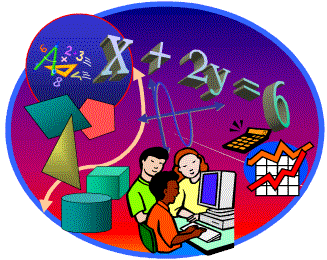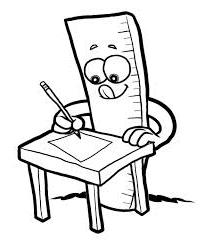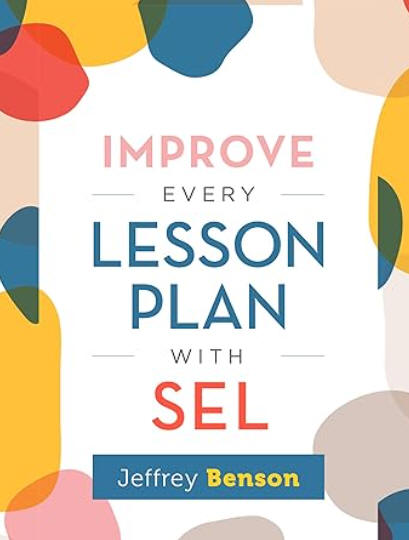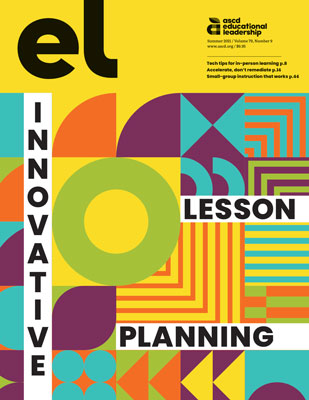Math Topics
Learning Support
Professional
![]()

 Our
collection of Math Resources has multiple pages designed for teaching
within specific grade bands. You'll also find valuable collections of
support and enrichment resources that will benefit all learners.
Our
collection of Math Resources has multiple pages designed for teaching
within specific grade bands. You'll also find valuable collections of
support and enrichment resources that will benefit all learners.
Math Resources (Page 1): K-8 Basic Mathematics and Skills Development, plus apps for mobile devices
Math Resources (Page 2): High School Subject Specific Resources, including apps for mobile devices: Algebra and Pre-Algebra, Geometry, Statistics, Probability, Trigonometry, Precalculus and Calculus
Math Resources (Page 3): K-12 Supplementary Collections: Miscellaneous Math Collections; Practical Applications--Math in Careers, Daily Life, and Across the Curriculum; and Problem Solving
Math Resources (Page 4): Enrichment and Extra Help: Math Contests, Competitions, Challenges, and Camps; Study Skills and Homework Help, plus tips for parent involvement; and Dictionaries, Glossaries, Reference Sheets, and Math Encyclopedias
![]() Math
Resources (Page 5):
Math
Resources (Page 5):
Math Resources (Page 6): Resources for Podcasts and Videos, the Flipped Learning Model, and Whiteboards, including tips on using the flipped learning model, creating better instructional videos, and using whiteboards
![]()
 You might consider using
the
EQuIP Rubric: Mathematics
available from Achieve the Core, which is a tool for
evaluating lesson plans and units of instruction in K-12 mathematics for
their alignment to CCSS. EQuIP stands for Educators Evaluating the
Quality of Instructional Products.
You might consider using
the
EQuIP Rubric: Mathematics
available from Achieve the Core, which is a tool for
evaluating lesson plans and units of instruction in K-12 mathematics for
their alignment to CCSS. EQuIP stands for Educators Evaluating the
Quality of Instructional Products.
Note: The rubric is not intended for evaluating a single task or activity.
The Tri-State Quality Review Rubric for Lessons & Units for Mathematics can be used to rate a lesson or unit on four levels: alignment to the rigor of the CCSS, key areas of focus in the CCSS, instructional supports, and assessment.
Wizer.me helps you make "smarter" interactive worksheets with multiple question types and enables you to easily provide feedback. Teachers can provide audio instructions. Wizer includes a free version for creating worksheets and you can assign them via Google Classroom or your learning management system. A paid premium version includes additional features.
Actuarial Foundation: Expect the Unexpected with Math includes lessons and activities for grades 6-8. The series uses story lines to motivate and show the relevance of math and includes printables, videos, and more. The site also provides lessons on personal finance in the Building Your Future series for grades 9-12.
All Kids Network has math worksheets for preK and lower elementary grades. For example, the collection includes numbers and patterns for preschool, then comparison, measurement, money, skip counting, addition, subtraction, multiplication, division, fractions, number bonds, tens and ones, graphing, time, odd/even numbers, and greater/less than.
Colorado Department of Education MathToolkits are presented in K-12 grade bands. Each begins with goals and standards, a summary of the toolkit, and needed materials and includes "four key components: a pre-assessment to gauge initial understanding, comprehensive lesson(s) to explore mathematical concepts, a post-assessment to measure learning progress and real world learning/extensions to apply knowledge in practical contexts."
Common Core Sheets is a collection of K-8 worksheets in math, social studies, science, language arts, writing, and spelling. Worksheets for math can be selected by grade level and then by standard.
CPALMS (Collaborate, Plan, Align, Learn, Motivate, Share) is Florida’s official source for standards information and course descriptions. It provides access to over 10,000 vetted K-12 activities, lessons, and other teacher resources for STEM and English language arts. Among topics are curriculum, activity, lesson plans, worksheets, virtual manipulatives, problem-solving tasks, data sets, web quests, projects, videos, educational games, formative assessments, teaching ideas, units, lesson study, and more. The site also offers self-paced professional development modules. "CPALMS instructional and educational resources are available FREE of charge to all Florida's public school teachers" (About section). Paid membership plans are available for other individuals, schools and districts.
DadsWorksheets.com has "thousands of math-related worksheets: math facts, place value problems, addition without carrying, subtraction without borrowing, suites of multiplication tests using various methodologies, fractions and more." Worksheets are free and designed to help learners to master concepts through repetition. There are some pre-algebra and basic geometry worksheets, and a section with worksheets organized by K-6 grade level. This site also has a series of online calculators.
Desmos Classroom Featured Collections contain 39 collections with multiple lessons and activities within each for elementary, middle, and high school. There are topics in aritimetic, algebra, geometry, statistics, precalculus, calculus, modeling, and more.
EdHelper.com contains hundreds of lessons, worksheets, and WebQuests for K-12 mathematics. Lessons include addition, algebra, applied math, arithmetic, calculators, calculus, discrete math, division, fractions, functions, games, geometry, graphing, measurement, money, numbers, operations, precalculus, probability, statistics, stories, and trigonometry. Materials, including test prep questions, are available by grade level. EdHelper worksheets use different numbers and solutions each time.
Education.com has "over 5,000 worksheets, over 150 workbooks, and a slew of online games organized by their Common Core codes, focusing on math and English language arts in kindergarten through eighth grade" per the decription. The site also includes lesson plans.
Education World's Math Worksheet Library contains printable math lessons selected from the resources of Teacher Created Materials. The lessons are arranged by grade bands (K-2, 3-5, 6-8, and 9-12). Answer keys are provided for lessons that require them.
Expii contains multiple free lessons featuring video, images, and text explanations in pre-algebra, algebra 1, algebra 2, geometry, and calculus. Science lessons are also available.
HOT!: Global Math Project, hosted by the American Institute of Mathematics, is a "is a worldwide movement of teachers committed to igniting and sustaining a love of mathematics in their students." Its programs include "an ever-growing collection of curriculum-aligned mathematics lessons for you to explore with your wonderful mathematics learners." Get excited with resources in James Tanton's Exploding Dots.
Have Fun Teaching includes free printable worksheets, activities, flash cards, songs, tools, and videos for grades K-5. There's also a blog. Common Core workbooks for K-5 are available for a fee.
![]() Illuminations from the NCTM has
over 700 lesson plans and over 100 activities (virtual manipulatives, applets,
and games), all searchable by NCTM Principles and Standards and Common
Core State standards. There are 13 Calculation Nation games, and issues
from its e-newsletter Bright Ideas.
Illuminations from the NCTM has
over 700 lesson plans and over 100 activities (virtual manipulatives, applets,
and games), all searchable by NCTM Principles and Standards and Common
Core State standards. There are 13 Calculation Nation games, and issues
from its e-newsletter Bright Ideas.
KnowItAll features over 9,500 "media assets and lessons, created by South Carolina ETV with a variety of partners for preK-12. The content has been optimized for tablets and mobile devices for one-to-one learning" (About section). Each lesson contains the essential question it addresses, information to prepare for the lesson including its duration, the lesson itself, standards addressed, resources, and assessments. You can filter the database by grade and subject.
K5Learning has free math worksheets for grades 1-6 on multiple topics, and math worksheets for preschool and kindergarten. K5Learning "is an online reading and math program for kids in kindergarten to grade 5."
K-12 Financial Literacy Lesson Plans from Mortage Calculator include lesson plans, activities, and tools for gradebands preK-4, 5-8, and 9-12. Topics address National Standards for K-12 Personal Finance Education. You'll find sections for financial responsibility and decision making, income and careers, planning and money management, credit and debt, risk management and insurance, and saving and investing.
Kuta Software has free worksheets for pre-algebra, algebra 1, geometry, and algebra 2. However, by purchasing the software teachers can generate their own worksheets and tests with multiple choice and free-response questions from parameters they select.
Math-Aids.Com is a free resource for anyone who wishes to use math worksheets to reinforce basic skills. Print an unlimited number of worksheets and answers to problems, which are randomly generated. You can choose several different types of math worksheets for each topic to cover various types of problems. There are over 90 different topics and over 1200 unique worksheets for K-12.
Mathematics Assessment Project: Classroom Challenges are "lessons that support teachers in formative assessment. There are 100 lessons in total, 20 at each grade from 6 to 8 and 40 for ‘Career and College Readiness’ at High School Grades 9 and above. Some lessons are focused on developing math concepts, others on solving non-routine problems."
Math Fact Cafe allows users to generate free custom K-5 math worksheets on basic facts, multiplication, counting, time, money, and word problems. There's also a category for conversions, both U.S. and metric. You can also access hundreds of pre-generated math worksheets and flashcards organized by grade level.
 Math Is Fun from the UK addresses
K-12 math in a fun learning environment. It has a mix of math concepts explained
in easy language, plus puzzles, games and quizzes. Suitable for students,
teachers and parents. Subjects covered include multiplication tables, long
division, fractions, percentages, platonic solids, angles, triangles and basic
algebra. It has printable worksheets to practice on, and answers can be printed
separately for scoring. The illustrated math dictionary is well done.
Math Is Fun from the UK addresses
K-12 math in a fun learning environment. It has a mix of math concepts explained
in easy language, plus puzzles, games and quizzes. Suitable for students,
teachers and parents. Subjects covered include multiplication tables, long
division, fractions, percentages, platonic solids, angles, triangles and basic
algebra. It has printable worksheets to practice on, and answers can be printed
separately for scoring. The illustrated math dictionary is well done.
Math-Drills claims over 58 thousand free printable math worksheets. There are a variety of topics in basic arithmetic, base-10 blocks, algebra, fractions, measurement, geometry, statistics, number sense, money, word problems, and more.
Math Worksheet Center encourages a paid subscription to over 8000 K-12 printable worksheets. It's well organized by grade, topic, skills, and age of students. The site offers a limited number of free worksheets and over 130 free math teaching and learning articles, however. Membership includes all worksheets, lessons, answers, quizzes, and homework.
MathWarehouse features free printable worksheets with answers for algebra, geometry, algebra, and trigonometry, many with additional web resources for math concepts.
Math Worksheets Land features preK-8 and high school worksheets with guided lessons that include the alignment of each to the Common Core standards. Worksheets are listed by topic and grade level. High school includes number & quantity, functions, algebra, geometry, and statistics & probability.
Noetic Learning Math Worksheet Creator includes free drill and practice worksheets with randomly generated problems. Teachers can set criteria for problems displayed in number sense and place value, addition, subtraction, multiplication, division, money, and fractions. The paid membership gives access to other topics in elementary math. The format for presenting problems with the worksheet creator is horizontal, so students may need to recopy problems to paper to line up numbers appropriately for completing calculations. Answers can be entered online and correct answers are displayed when students indicate they are done.
PBS LearningMedia includes free media resources searchable by grade level, standards, media type, and subject. Resources include video and audio segments, interactives, images, documents, lesson plans, productivity tools for teachers, self-paced lessons, and student-oriented activities. You'll find media from NOVA, Frontline, American Experience, and other public broadcasting and content partners. The mathematics section features K-8 mathematics strands, and high school number and quantity, algebra, geometry, functions, statistics and probability. Highly recommended.
Share My Lesson includes preK-12 teaching resources in multiple subjects created by teachers around the globe for teachers. Resources are divided into grade bands and for special populations. The site is free and also provides "an online community where teachers can collaborate with, encourage and inspire each other. Share My Lesson has a significant resource bank for Common Core State Standards, covering all aspects of the standards, from advice and guides to help with dedicated resources that support the standards" (About Us section). The site was developed by the American Federation of Teachers and TES Connect. The math section features free lesson plans, teaching and professional development resources for preK-12, higher education, and adult education.
Skew The Script contains free lessons for AP Statistics, Algebra 1, and Algebra 2. Statistics lessons provide a full curriculum and delve into relevant contexts, such as civics and economics, health and technology, sports and social media, and more. Algebra lessons are designed to supplement your units and also delve into relevant contexts, such as civics, public health, the environment, business, and sports. Lessons include video, student items, and teacher items.
STatistics Education Web (STEW) provides online peer-reviewed lesson plans for K-12 math and science teachers who teach statistics concepts in their classrooms. These are organized by grade bands K-5, 6-8, and 9-12+ and include statistical concepts being addressed. The lesson plans follow the recommendations of the Guidelines for Assessment and Instruction in Statistics Education (GAISE) Report.
SuperKids Math Worksheets--a free site to generate drill and practice worksheets with customization options provided (e.g., using negative integers and decimals, number of problems and parameters), including answers. Various topics include addition, subtraction, multiplication, division, fractions, rounding, averages, time, order of operations, percents, greater than/less than, factorials, exponents, and odd/even. There is a tool to determine if a number is prime.
Super Teacher Worksheets is primarily for elementary grades with pre-constructed math worksheets with answers. Worksheets are organized by level of difficulty and topic. Other content areas are included. There are many free worksheets, but a paid option allows access to all worksheets.
TeAch-nology has an extensive collection of over 2,000 free printable worksheets for math ranging in skills for grades 1-12. There is also an extensive collection of lesson plans for math at various grade levels.
TES based in England boasts "the largest network of teachers in the world." Teachers freely share lesson plans, games, worksheets, teaching ideas, and activities in numerous content areas. The site also includes teaching resources for learners with special educational needs. Mathematics resources are available at the pre-school, primary and secondary levels.
Utah Education Network contains an extensive set of core lesson plans in elementary and secondary mathematics, and other content areas, in their K-12 education section. These are of high quality.
 Worksheet Library has
several thousand printable K-8 worksheets in PDF format for teachers,
parents, and home-schooled students. While there are hundreds offered
for free, there is a nominal yearly fee for access to all. Answers are
provided. Subjects addressed include mathematics, language arts,
science, and social studies. Graphic organizers and time savers are a plus.
Worksheet Library has
several thousand printable K-8 worksheets in PDF format for teachers,
parents, and home-schooled students. While there are hundreds offered
for free, there is a nominal yearly fee for access to all. Answers are
provided. Subjects addressed include mathematics, language arts,
science, and social studies. Graphic organizers and time savers are a plus.
Every teacher needs a unit plan and daily lesson plan. In general, teachers should evaluate the equity of their lessons during the planning process. Ensure lessons align to content standards. Use universal design for learning principles to present material in multiple ways, and design for differentiated instruction to meet needs of all learners. For learners with disabilities, consider the accommodations needed for their success, which might be provided in the learner's individualized education plan. The IRIS Center at Vanderbilt University provides an interactive alignment tool for High-Leverage Practices, which addresses assessment, collaboration, instructional practices, and the social/emotional/behavioral environment.
Tim Westerberg (2021) proposed a unifying framework for teachers to use in planning units of instruction. The framework, which "ensures alignment between stated curriculum, taught curriculum, and assessed curriculum," consists of the following five steps:
Stiliana Milkova (n.d.) elaborated on Strategies for Effective Lesson Planning and included the following six steps for preparing a lesson plan:
At Step 1, don't forget to incorporate levels of understanding per Bloom's Taxonomy. The following illustrate some key action verbs to consider in writing objectives:
At Step 4, consider giving learners options to demonstrate their understanding, such as by using math menus and choice boards.
Dana Leon (2023) noted that using a choice board enhances students' motivation and their metacognitive awareness. Choice boards also enable differentiated instruction. In her article, Math Choice Boards for Elementary School, Leon provided resources (e.g., templates) and ideas for their implementation. Among ideas for a choice board are options to have students build a model, draw a picture, make a poster, write a song, create a word problem, make a book or a movie or a slideshow, use a virtual manipulative, and play a game.
Math teachers will appreciate the following books on choice by Laurie Westphal. Each includes reproducible menus, based on Bloom's Revised Taxonomy, and multiple menu types:
 Differentiating Instruction with Menus: Math (Grades K-2)
(2010) includes three-shape, tic-tac-toe, meal, 2-5-8, give me five, and list menus. Topics addressed include numbers and
number sense, operations, geometry, and measurement.
Differentiating Instruction with Menus: Math (Grades K-2)
(2010) includes three-shape, tic-tac-toe, meal, 2-5-8, give me five, and list menus. Topics addressed include numbers and
number sense, operations, geometry, and measurement.Step 5 in the plan is sometimes missing in lessons when time is running short and the teacher has not anticipated how to adjust a lesson quickly, as needed, per Step 6. As every lesson should have closure, Todd Finley (2015) provided 22 Powerful Closure Activities for ending a lesson and creating a lasting impression of its content.
 Jeffrey Benson advocates incorporating social and emotional learning (SEL) into
K-12 lesson planning and provides research-based, explicit step-by-step guidance in his 2021 book,
Improve Every Lesson Plan with SEL.
SEL goals should be made explicit. Those essential skills are actually for
all ages and can be observed, but are demonstrated differently as children grow
up. They include skills for one's self (e.g., emotional self-awareness,
personal goal setting, identifying strengths and supports), interpersonal skills
(e.g., how others feel, workinig with similarities and differences,
communicating with others), and skills as a community member (e.g., how your
actions impact the community, socially responsible decision making, contributing
to the greater good). (Chapter 1, Figure 1.1)
Jeffrey Benson advocates incorporating social and emotional learning (SEL) into
K-12 lesson planning and provides research-based, explicit step-by-step guidance in his 2021 book,
Improve Every Lesson Plan with SEL.
SEL goals should be made explicit. Those essential skills are actually for
all ages and can be observed, but are demonstrated differently as children grow
up. They include skills for one's self (e.g., emotional self-awareness,
personal goal setting, identifying strengths and supports), interpersonal skills
(e.g., how others feel, workinig with similarities and differences,
communicating with others), and skills as a community member (e.g., how your
actions impact the community, socially responsible decision making, contributing
to the greater good). (Chapter 1, Figure 1.1)
If you are planning a lesson involving technology, consider the affect of screen time on learners, as excessive screen time has been shown to impact physical health. Kecia Ray (2020) provided the following tips for teachers to balance screen time during instruction:
- Utilize a blended learning instructional model
- Interval lessons with on-screen digital content (video, text reading, software applications) - 20 minutes
- Prioritize videoconferencing
- Use flipped learning strategies
- Take advantage of other media platforms if appropriate (paper is still a good technology to rely on)
- Prioritize activities where students use technology for creation versus consumption (see TIMS matrix).
Common Curriculum (CC) is a digital lesson planning tool. It comes with templates and a calendar style layout. There are three plans. The basic plan is free and allows for daily, weekly, and monthly lesson plans, inclusion of state or Common Core standards, and posting to Google Classroom. You can print or download lessons, and reuse lessons from prior years, and link or upload files from your computer, Google Drive, DropBox, and Office 365. Paid plans offer additional features, such as unit planning, standards tracking, comments, and school-wide templates.
Planboard from PowerSchool is a free online lesson planner and gradebook. When creating lessons you can add files, photos, and videos, build lesson templates, connect standards, and view and edit your lessons on iOS and Android. The gradebook features both formative and summative assessments, and forms of assessment that include "criteria base, anecdotal, conference notes, and learning skills." You can also customize the gradebook with categories, weights, and so on and create student progress reports.
PlanbookEdu is free lesson planning software that enables you to store your data online. The free version includes one planbook per year, which you can customize. For a nominal fee, you can get unlimited planbooks per year, printing and sharing features, and embed your lesson planbook in your own web site.
Wisconsin Department of Public Instruction: Mathematics Instruction Page includes a course plan template, a unit plan template, and a lesson plan template. Each is detailed with guiding questions for planning math instruction.
In the ABCs of Rigorous Lesson Design, Karin Hess (2021) related Norman Webb's Depth of Knowledge (DOK) framework to student and teacher roles in planning lessons. She also provided a sample math lesson and unit planning template illustrating DOK activities within each of the four levels in the framework.
See the DOK definitions for mathematics at each level of the framwork, posted at Web Align.

CAST explains what universal design for learning (UDL) is all about. Materials and lessons designed according to UDL give students multiple means of representing concepts so that they have several ways to acquire information and knowledge, multiple means of engagement to tap into their interests, offer appropriate challenges and maintain or increase motivation, and multiple means of expressing what they have learned. See the UDL Guidelines for implementation.
 HOT!: ASCD has made
its entire Summer 2021 edition of Educational Leadership,
Innovative Lesson Planning, freely available to all. Readers might
be particularly interested in "Lesson Planning with Universal Design for
Learning" by Lee Ann Jung (pp. 38-43). She lists strategies for
engagement, multiple means of representation, and multiple means of action
and expression, the latter of which illustrates ways that students can
demonstrate their learning.
HOT!: ASCD has made
its entire Summer 2021 edition of Educational Leadership,
Innovative Lesson Planning, freely available to all. Readers might
be particularly interested in "Lesson Planning with Universal Design for
Learning" by Lee Ann Jung (pp. 38-43). She lists strategies for
engagement, multiple means of representation, and multiple means of action
and expression, the latter of which illustrates ways that students can
demonstrate their learning.
You'll find materials at each of these sites, which can be accessed online or as a download. Some downloads are free; others might have restrictions.
Agile Mind in collaboration with the Dana Center at The University of Texas in Austin developed programs for middle school math, Algebra I, Intensified Algebra I (for learners one to three grade levels behind in mathematics), Geometry, Algebra II, Precalculus, AP Calculus, and AP Statistics.
Big Ideas Learning, founded by Dr. Ron Lawson, has produced a series of math books for grades K-5, 6-8 and 9-12 (algebra l, geometry, algebra ll). Big Ideas Math programs are distributed by National Geographic Learning.
Bookshare is an online library of audio books and ebooks, which makes the site particularly valuable for people with print disabilities (e.g., visual, physical, and learning). Bookshare Members download books, textbooks and newspapers in a compressed, encrypted file. They then can read the material using adaptive technology, typically software that reads the book aloud (text-to-speech) and/or displays the text of the book on a computer screen, or Braille access devices, such as refreshable Braille displays.
Through an award from the U.S. Department of Education Office of Special Education Programs (OSEP), Bookshare offers free memberships to U.S. schools and qualifying U.S. students." (Educators and Schools section) Browse the Bookshare categories, which notes over 27,000 books for math and statistics. The books are available in multiple languages.
College Preparatory Mathematics offers curriculum for grades 6-12 and has a student, teacher, and parent resource center online. The student Skill Builders are particularly useful for extra problem sets with answers and additional explanations for topics in the following texts: Foundations for Algebra 1 & 2, Math 1 (algebra 1), Math 2 (geometry), Math 3 (algebra 2), Algebra Connections, Geometry Connections.
Great Minds: Eureka Math. "Great Minds offers the Eureka Math curriculum as PDF downloads for free, non-commercial use." The curriculum "includes over 20,000 pages and features sequenced lessons, formative assessments, and fully integrated professional development for Grades PK-12. The package includes: Student and Teacher editions, Curriculum Maps, Curriculum Overviews, and Release Notes." Note: There is a 30-day free trial to Eureka Math Digital Suite.
McGraw-Hill: Everyday Mathematics for preK-6 has digital technology to accompany texts. It aligns with the Common Core standards. Everyday Mathematics was developed by the University of Chicago School Mathematics Project.
CK-12 Foundation is a "non-profit organization with a mission to reduce the cost of textbook materials for the K-12 market both in the U.S. and worldwide. Using an open-content, web-based collaborative model termed the "FlexBook," CK-12 intends to pioneer the generation and distribution of high quality educational content that will serve both as core text as well as provide an adaptive environment for learning." Teachers can search for texts aligned to Common Core standards and other state and standard sets, by subject, and by grade. You'll find math sections on grades 1-5, arithmetic, measurement, algebra, geometry, probability, statistics, trigonometry, analysis, and calculus. For example, the section for elementary math for grades 1-5 aligned to the Common Core standards contains interactive math practice problems, videos, video hints, and full step-by-step solutions, all free. Also see the CK-12 Foundation Dedicated Channel for videos on YouTube.
IvyPanda (study and writing tips for smart students) includes a library of links to open-source textbooks in multiple subjects, including mathematics and a separate category for statistics.
MERLOT provides peer-reviewed online teaching and learning materials in numerous categories. Education, and mathematics/statistics are among those.
MIT OpenCourseware includes courses, materials, and teaching resources covering the MIT curriculum. A search for mathematics reveals over 160 resources at undergraduate and graduate levels.
Open Culture scours for the best free educational media on the web. In addition to online courses, language lessons, eBooks, audio books, movies, podcasts, and a section for K-12, there's a collection of free textbooks, including for mathematics.
OpenStax publishes free peer-reviewed online textbooks and print editions at a low cost. You'll find multiple books for math. Content is primarily for upper level courses, including college. There's also an online math homework system at a nominal fee with step-by-step feedback.
Open Textbook Library hosted by the University of Minnesota contains free texts in numerous disciplines, including textbooks that can be used in upper level math courses.
Wikiversity invites teachers, students, and researchers to join their endeavors to create open education resources and collaborative learning communities. The project is devoted to learning resources, learning projects, and research for use at all levels and types of education from pre-school to university, professional development, and informal learning. Visit the Wikiversity Math Portal.
 More and more schools are now using online content to support their curricula.
In selected findings from a national survey conducted by Project Tomorrow, titled
Speak Up 2008 for Students, Teachers, Parents and Administrators,
students in grades 6–12 provided their views on their ultimate digital textbook.
Here's a sampling of the kinds of electronic features and functionality that they would like to use:
More and more schools are now using online content to support their curricula.
In selected findings from a national survey conducted by Project Tomorrow, titled
Speak Up 2008 for Students, Teachers, Parents and Administrators,
students in grades 6–12 provided their views on their ultimate digital textbook.
Here's a sampling of the kinds of electronic features and functionality that they would like to use:
Ability to personalize their book with electronic highlights and notes (63%);
Ability to take quizzes and tests on their own to assess their own content proficiency (62%) or use self-paced tutorials (46%);
Access links to such real-time data as NASA and Google Earth (52%);
Tap into the expertise of an online tutor whenever necessary (53%);
Link to PowerPoints of class lectures that supported the textbook content (55%);
Explore concepts through games (57%) or animations and simulations (55%);
Access content outside of school through links to videoconferences (30%) or podcasts from subject experts (34%); and
Watch video clips about topics they are studying (51%) and create podcasts or videos to support their own learning (48%). (Project Tomorrow, 2009, p. 7).
This ultimate digital textbook would "mimic the way they are approaching learning in general, with heavy emphasis on communications, collaboration, creating content and overall taking control of the learning process themselves" (p. 7).
Read Patricia Deubel's article: E-textbooks: Points to ponder on pixels and paper. THE Journal. Available: https://thejournal.com/articles/2006/10/04/etextbooks-points-to-ponder-on-pixels-and-paper.aspx?sc_lang=en The article includes potential e-text features, but raises a concern that an exclusive adoption of e-textbooks in K-12 might not meet the needs of all learners.
Back to top | Math Resources: Page 1 | 2 | 3 | 4 | 5 | 6
Finley, T. (2015, December 15). 22 powerful closure activities. Edutopia. https://www.edutopia.org/blog/22-powerful-closure-activities-todd-finley
Hess, K. (2021, June 24). The ABCs of rigorous lesson design. ASCD Express, 16(20). https://www.ascd.org/el/articles/the-abcs-of-rigorous-lesson-design
Leon, D. (2023, September 12). Math choice boards for elementary school [Blog post]. https://www.hmhco.com/blog/math-choice-boards-for-elementary-school
Milkova, S. (n.d.). Strategies for effective lesson planning. Ann Arbor, MI: University of Michigan, Center for Research on Learning and Teaching. https://crlt.umich.edu/sites/default/files/resource_files/GSI_Guidebook/GSI_Guidebook_37-39.pdf
Project Tomorrow (2009, March 24). Selected national findings: Speak Up 2008 for students, teachers, parents and administrators. https://files.eric.ed.gov/fulltext/ED540403.pdf
Ray, K. (2020, November 18). What research shows about screen time for students. https://www.techlearning.com/news/what-research-shows-about-screen-time-for-students
Westerberg, T. (2021, July 1). Developing well-designed standards based units. Educational Leadership, 78(9). https://www.ascd.org/el/articles/developing-well-designed-standards-based-units
![]()
Back to top | Math Resources: Page 1 | 2 | 3 | 4 | 5 | 6
![]() See
related topics:
Math Manipulatives
and
Standardized Test
Preparation.
See
related topics:
Math Manipulatives
and
Standardized Test
Preparation.